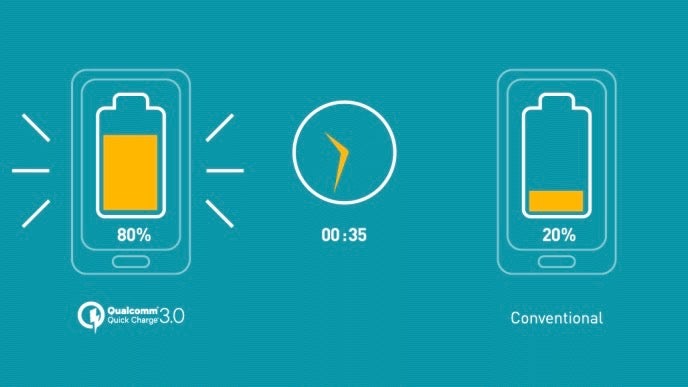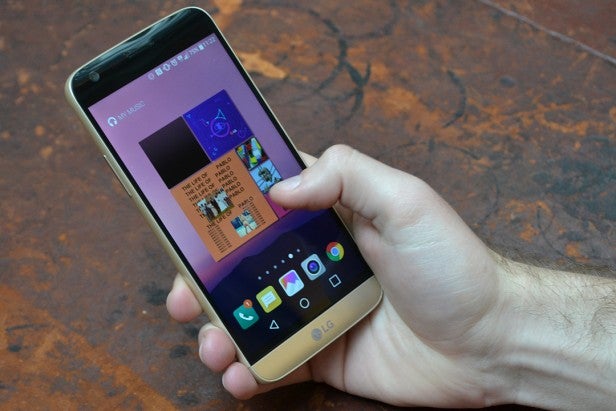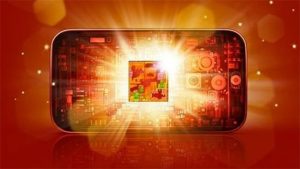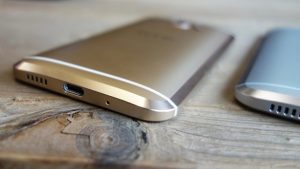Should you care about Quick Charge 3.0 on the HTC 10 and LG G5?

The world’s biggest smartphone CPU maker and the world’s biggest smartphone OS maker are apparently in disagreement over Quick Charge 3.0. So what is it, and should you be worried about it?
There’s a dispute brewing between two companies over Quick Charge 3.0. Qualcomm – the maker of the Snapdragon 820 CPU that powers the HTC 10 and the LG G5 – and Google, the maker of Android. The new charging standard and its apparent incompatibility with the emerging USB Type-C connection, has caused a steadily bubbling controversy.
So what is Quick Charge 3.0, why is it causing such a stir, and is your new flagship phone likely to blow up any time soon? Allow us to explain.
What is Quick Charge 3.0?
Quick Charge 3.0 is the latest version of Qualcomm’s quick-charging standard, which was announced on September 15, 2015. When utilised, Quick Charge permits compatible phones to attain 80 percent of a full charge in well under an hour.
Why only 80 percent?
Modern smartphone batteries charge in two phases. From 0 to 80 percent of a battery’s charge, they can absorb a large amount of energy at once. For the rest of its charge, right up to the 100 percent mark, your phone’s battery needs to sip the power a little more carefully.
Quick Charge (and other quick-charging standards) speeds up the process by pumping in more volts than your average phone charger can typically take (which tends to be 5V at 2A) in that early phase.
Related: Best smartphone
3.0 for efficiency
Quick Charge 3.0 can hit that magic 80 percent mark in as little as 35 minutes. However, while that’s roughly twice as fast as the original Quick Charge standard, it’s not significantly faster than Quick Charge 2.0.
Rather, the benefit of Quick Charge 3.0 over its predecessor is that it’s an estimated 38 percent more power-efficient. Thanks to its Intelligent Negotiation for Optimum Voltage (INOV) algorithm, compatible phones can optimise the amount of power they take in, depending on current battery conditions.
 The LG G5 supports Qualcomm’s latest quick-charge tech
The LG G5 supports Qualcomm’s latest quick-charge tech
While Quick Charge 2.0 can only work at four voltages – 5V, 9V, 12V and 20V – Quick Charge 3.0 can work in 200mV increments from 3.6V to 20V. That means it will only ever request as much power as it needs to charge your phone.
The result: less power wastage, and less of that disconcerting heat build-up.
Quick Charge 3.0 support
Quick Charge 3.0 is a feature of several Qualcomm processors. These include the Snapdragon 820, 620, 618, 617 and 430.
Notable recent phones that have incorporated these chips and have supported Quick Charge 3.0 include the LG G5 and the HTC 10. And it’s the arrival of these high-profile phones from established manufacturers that has brought a significant discrepancy to light.
One big flagship that’s missing Quick Charge 3.0 compatibility is the Samsung Galaxy S7. That might sound strange, but there’s a reason. Only the US version of the S7 is powered by the Snapdragon 820, with all the others versions running an Exynos CPU. As that Exynos CPU doesn’t support QC 3.0, Samsung left it out of the 820 versions too.
Related: Snapdragon 820 vs 810 vs 808

Quick Charge and USB Type-C
Alongside the Snapdragon 820 CPU and Quick Charge 3.0 compatibility, Both the LG G5 and the HTC 10 feature the latest USB Type-C connection standard. The benefits of this standard are discussed in another piece – suffice to say that it’s reversible and very flexible.
Related: USB-C: everything you need to know
But there’s a snag. As Google engineer Benson Leung pointed out back in November 2015, USB Type-C’s specifications are not compatible with Quick Charge, or any kind of similar quick charging standard for that matter. It’s all in the proprietary way in which the method redefines voltage, which is prohibited in the USB Type-C specifications.
It’s for this very reason that Google’s latest flagship phones, the Nexus 6P and Nexus 5X, don’t support Quick Charge 2.0 (the phones run on the older Snapdragon 810 and 808 respectively).
From a certain angle, then, LG and HTC’s support of Quick Charge 3.0 over USB Type-C appears to be dismissing Google’s lead and playing fast and loose with the rulebook.

Qualcomm’s response
All of which might have you fearing for the life of your HTC 10 or LG G5 every time you plug it in using a Quick Charge 3.0 charger.
Qualcomm recently addressed such concerns in a statement picked up by Android Central. This reads, in full:
“Qualcomm Quick Charge is designed to be connector-independent. It can be implemented in a device that supports a variety of connectors, including USB Type-A, USB micro, USB Type-C, and others. When an OEM chooses to implement Quick Charge into their device, they can configure the voltage to fit within the specifications of the USB Type-C standard. We have received no reports of user experience or device malfunction issues with or without USB Type-C connectors. At Qualcomm Technologies, we are continuously working to provide the best solutions for our customers and consumers. Qualcomm Quick Charge is a leading edge fast charging solution with more than 70 devices and 200 accessories supporting one of the two most recent versions of Quick Charge, with even more currently in development.”
Related: Best Android smartphone
Next, check out our HTC 10 hands-on video:
On the one hand, this statement reassures customers that there have been no reported instances of phones being damaged through a combination of Quick Charge and USB Type-C. On the other hand, it doesn’t specifically address the glaring issue that the combination of these two technologies remains essentially unapproved and potentially risky.
When it comes to your new handset, we’d recommend sticking with the charging equipment supplied or recommended by each manufacturer, as third party USB Type-C cables can vary massively in quality and permitted voltage.
However, given the other certifications that will have gone into approving these major smartphones and their related accessories for sale, you can be confident that your new HTC 10 or LG G5 won’t we susceptible to a chronic Quick Charge 3.0-based malfunction.
Let us know your thoughts on Quick Charge 3.0 and USB Type-C in the comments.


